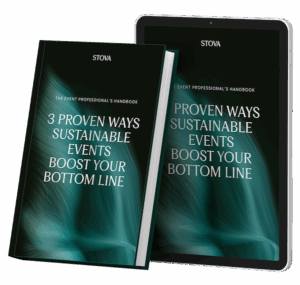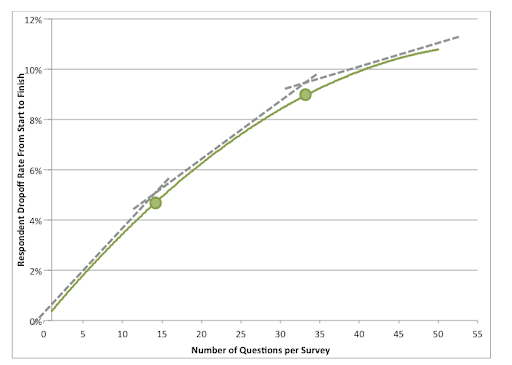3 Tips to Create an Experiential Marketing Post-Event Survey
February 18, 2019
These words by Bill Gates should very well be one of the golden rules of experiential marketing: “We all need people who will give us feedback. That’s how we improve.”
With more than 33% of CMOs planning to spend anywhere between 21% to 50% of their marketing budget on events, event marketers should make it a priority to constantly improve event strategies and executions in order to achieve the highest possible ROI.
One of the tried and tested ways to do this is with post-event surveys. It’s a marketing measurement tool that’s been around since time forever, without requiring extremely advanced technology to execute. Yet, according to a survey, 3 out of 5 marketers are not using any tool to measure their event success.
Among these marketers, there are 3 reasons they’re not utilizing post-event surveys to gather insights: (1) they don’t see the value; (2) they don’t know how to execute one; and (3) both.
To help marketers with this, here is a quick guide on how to create post-event surveys. And not just surveys for the sake of asking for feedback, but surveys that can lead to valuable insights that will transform how event marketers plan and execute their next events.
1. Ask the Right People
It’s a default for event marketers to send out post-event surveys to attendees. However, they are not the only ones that could provide insightful feedback. Here are some key groups that event managers should send out post-event surveys to:
- Volunteers. Spending a lot of face time with event attendees, volunteers are sources of a wealth of information from their interactions and conversations with participants.
- Exhibitors. The success of trade shows depends largely on the quantity and quality of exhibitors. Aside from providing a great event experience to participants, trade show organizers need to make sure exhibitors are getting positive ROI.
- Sponsors. Getting regular, supportive, and invested sponsors greatly influences the success of an event. Asking for feedback from sponsors regarding how they can get the most out of their sponsorship investments is a necessity for event marketers to ensure sponsorship money keeps flowing in.
2. Establish Clear Survey Goals
Event marketers should have clearly defined business goals for every step of the event planning process from the choice of an event management platform, event technology to be used, event apps, and so on and so forth. This includes any post-event success measurement tactics such as post-event surveys.
All successful post-event surveys should be able to meet the following objectives:
- Identifying what the stakeholders found as the event highlights. When planning an event, there are certain elements that are considered the main engagement/results drivers, as well as supporting components. Post-event surveys should be able to determine whether these main event elements are accomplishing the primary business objectives of events.
- Establish points of improvement for future events. No event is perfect. Even institutional, recurring events will have opportunities for optimization and post-event surveys can identify these opportunities.
- Determine attendee expectations versus the event content delivered. Meeting attendee expectations in terms of event content is arguably the biggest factor that influences the overall event outcome.
3. Implement Survey Writing Best Practices
Of course, every organization can have its own set of strategies and tactics when creating surveys that reflect their brand voice and personality. However, not all surveys are created equal and the difference boils down to survey writing best practices.
Here are a few of them:
- Find an agreeable compromise between the number of required and non-required questions (provide an N/A option if the question is not applicable to specific participants).
- According to SurveyMonkey, the ideal length for surveys is 10 questions, maximum 15 questions. There could be exceptions to this, but for most surveys, this is the gold standard. For every question that exceeds this ideal number, the response rate decreases. According to content strategy specialist Meghan Lockwood: “My best editorial advice: Keep your surveys as short as humanly possible. No matter how much you want to learn (or how many additions you get from the outside), the fewer questions you ask, the more responses you will get. At Sherpa, we found that with any survey that takes longer than 5 10 minutes you watch a dramatic drop-off in response rates.”
- Stick to multiple choice questions or those that can be answered with a rating scale. It’s easier to visualize data with these questions. Event marketers can add one question in the end for any specific comment or feedback that the respondents would want to get across.
The Right Questions Pave the Way to Better Future Events
Well-crafted surveys can build a goldmine of insights for event marketers that they are unable to find anywhere. With the right set of respondents, clear and established post-event survey objectives, and the survey writing best practices, experiential marketing campaigns can be continuously improved to meet the expectations of event attendees. Plus, given the different integrations of event management platforms, event technologies, and event apps, sending out surveys should be a basic tool in every marketer’s event strategy arsenal.
Stova (formerly etouches) has helped thousands of brands globally transform the way they plan and execute their meetings and events, while tracking and improving their business objectives. Subscribe to our newsletter to receive regular updates on our fresh content.
Whether your event is virtual, hybrid, or in-person, enhance your attendee’s journey with an event ecosystem built for your audience. Ready to walk through Stova's event technology solutions? Schedule some time with us today.



